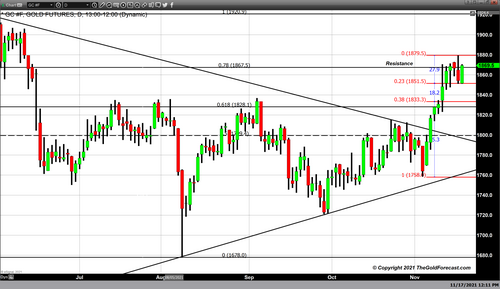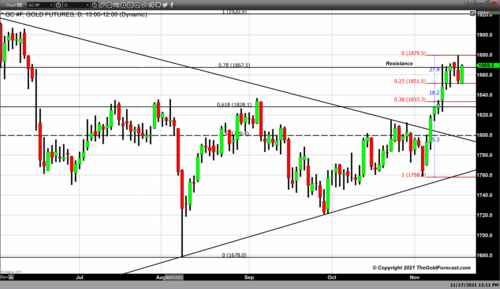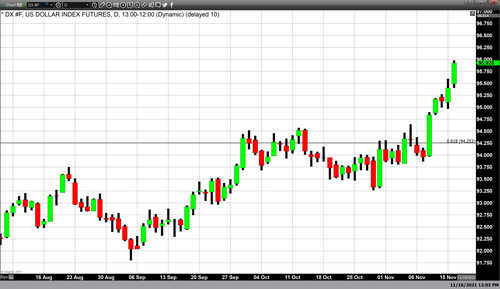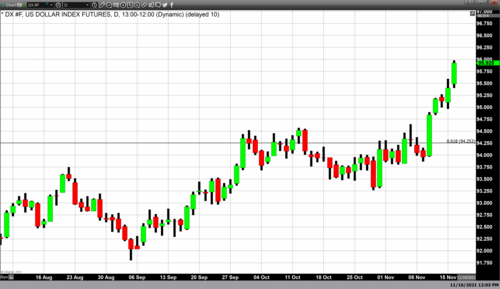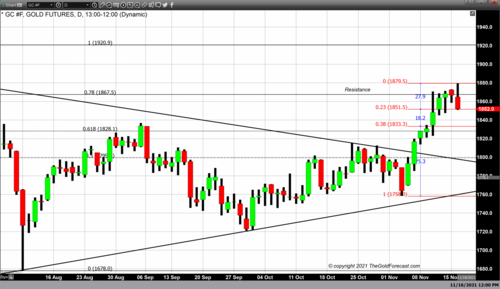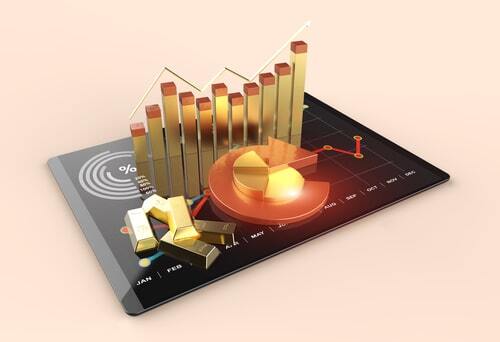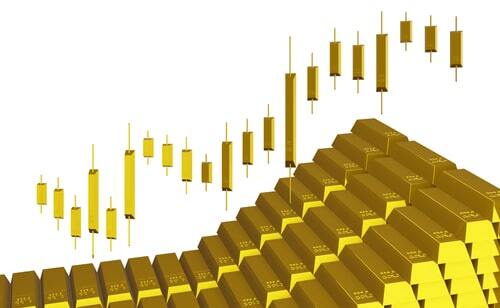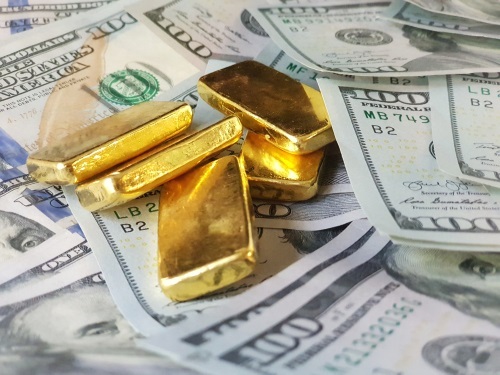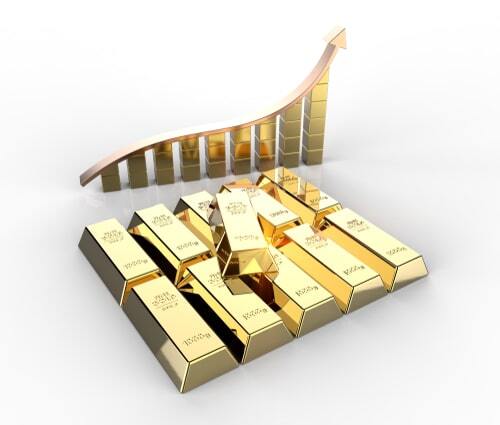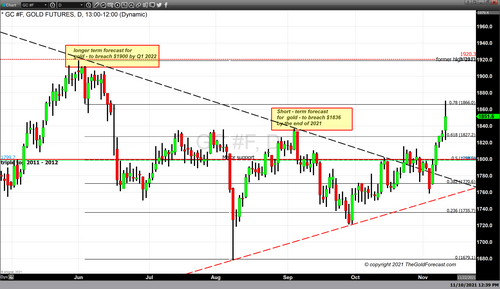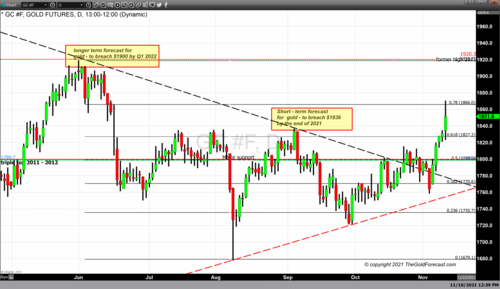Gold has gained over $100 in November but now has entered a period of price consolidation
Since November 11 gold began to consolidate after completing the current leg of the most recent rally that began on November 4. The rally started one day after the conclusion of the November FOMC meeting. They announced that they would begin to taper their $120 billion asset accumulation later in the month. They announced that they would have a monthly reduction totaling $15 billion and continue the reduction until they are at a net-zero. Concurrently they indicated in unison with the ECB and Bank of England to keep interest rates extremely accommodative.
.png)
The Federal Reserve has been actively providing liquidity to aid in the economic recovery which was a direct result of a global pandemic. The last occurrence of massive asset accumulation by the Federal Reserve was during the economic recovery from the 2009 recession, a direct result of the banking crisis in the United States. During the first occurrence of “quantitative easing,” the net result of which was that the Federal Reserve with a balance sheet of roughly $4.5 trillion.
In approximately 2013, as they completed their tapering process, the Federal Reserve began to reduce their balance sheet taking their assets down to $3.7 trillion before they stopped reducing their assets. At that time, they believed that a further reduction would have a detrimental effect on the economic recovery which had taken place.
However, compared to their asset accumulation during the 2009 recession the current strategy of quantitative easing by the Federal Reserve has resulted in an asset balance sheet that has swelled to $8.6 trillion. Roughly double the size of their assets that they accumulated in 2009. At the current rate of a $15 billion monthly reduction, it will take at least until June 2022 before they complete the process.
While there is much uncertainty about when the Federal Reserve will begin to normalize rates, and at what pace that rate normalization will take place, what is certain is that at some point most likely in 2022, but at the latest in 2023, they will begin the process of lift-off in which they will slowly ratchet the Federal funds rate currently in essence at 0% back to normalized rates of around 2.5%.
The net result of the massive asset purchases by the Federal Reserve coupled with extensive expenditures by the administration in terms of fiscal stimulus has seriously impacted the current inflationary rate. While much of the current inflationary pressures are temporary, based upon applied chain bottlenecks and labor shortages which has greatly hindered companies in supplying the surge in demand of goods and services. Collectively these issues had taken the current rate of inflation to a level not seen since November 2009 when CPI inflationary index was at 6.2%.
The Federal Reserve has let inflation run hot instead of focusing on achieving maximum employment, one-half of their dual mandate. The other component of this dual mandate is to keep inflationary rates at approximately 2%. It is the spiraling rate of inflation that has been the primary undertone taking gold higher from $1770 on November 4 to $1880 on November 16. In other words, over the first two weeks of November gold prices increased by over $100 per ounce due to inflationary concerns. However, the price search in gold only took five trading days, or one week before gold pricing began to consolidate which is what is currently occurring. Typically, after a commodity has a dynamic rally, it will either have a correction in price or have price consolidation. The current price consolidation in gold indicates that the precious yellow metal is potentially forming a base at this new higher level and awaiting the set of next fundamental events.
Over the last six trading days since November 11, we have had gold open and close within a defined price range with the lows at $1851 and the highest closing price which occurred yesterday at $1870.
The recent price increase of over $100 was in direct response to rising inflationary pressures. However higher inflation contains a double-edged sword because the Federal Reserve has one primary tool in their toolbox to make inflation lower and that is to raise interest rates. Higher rates will pressure gold lower which makes forecasting the future price of gold a difficult read.
Our current assessment is that if we can get an effective close in gold above $1880, it has a clear path to challenge $1900 and possibly even trade as high as $1920, the high seen in June 2021. If the Federal Reserve raises rates immediately after the conclusion of tapering, we could see gold at that point come under significant pressure. However, that timeline still allows for inflation to continue to rise, and gold to gain value at least until June 2022.
By Gary Wagner
Contributing to kitco.com
Buy, Sell Gold and Silver, with Free Storage and Monthly Yields
David
